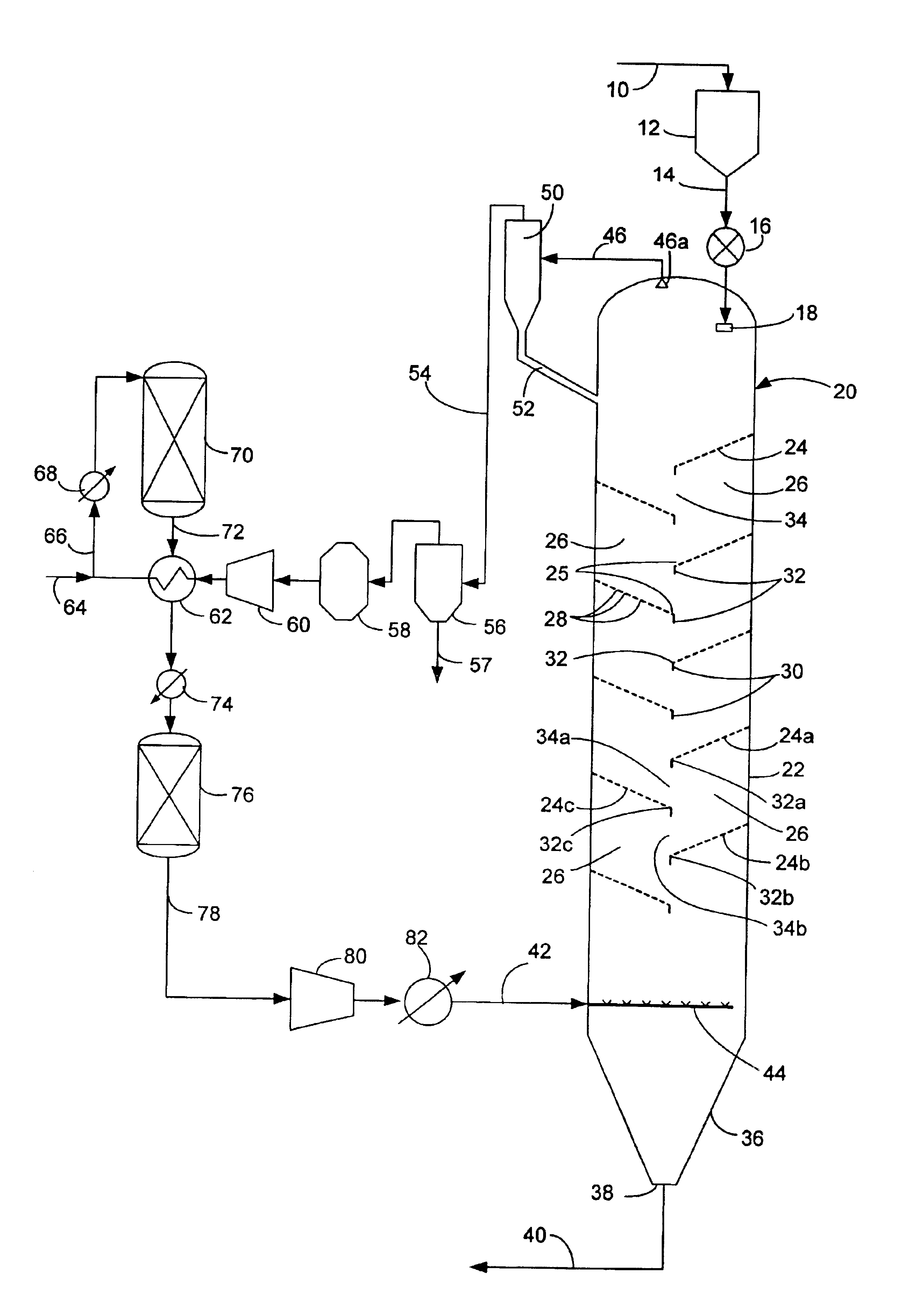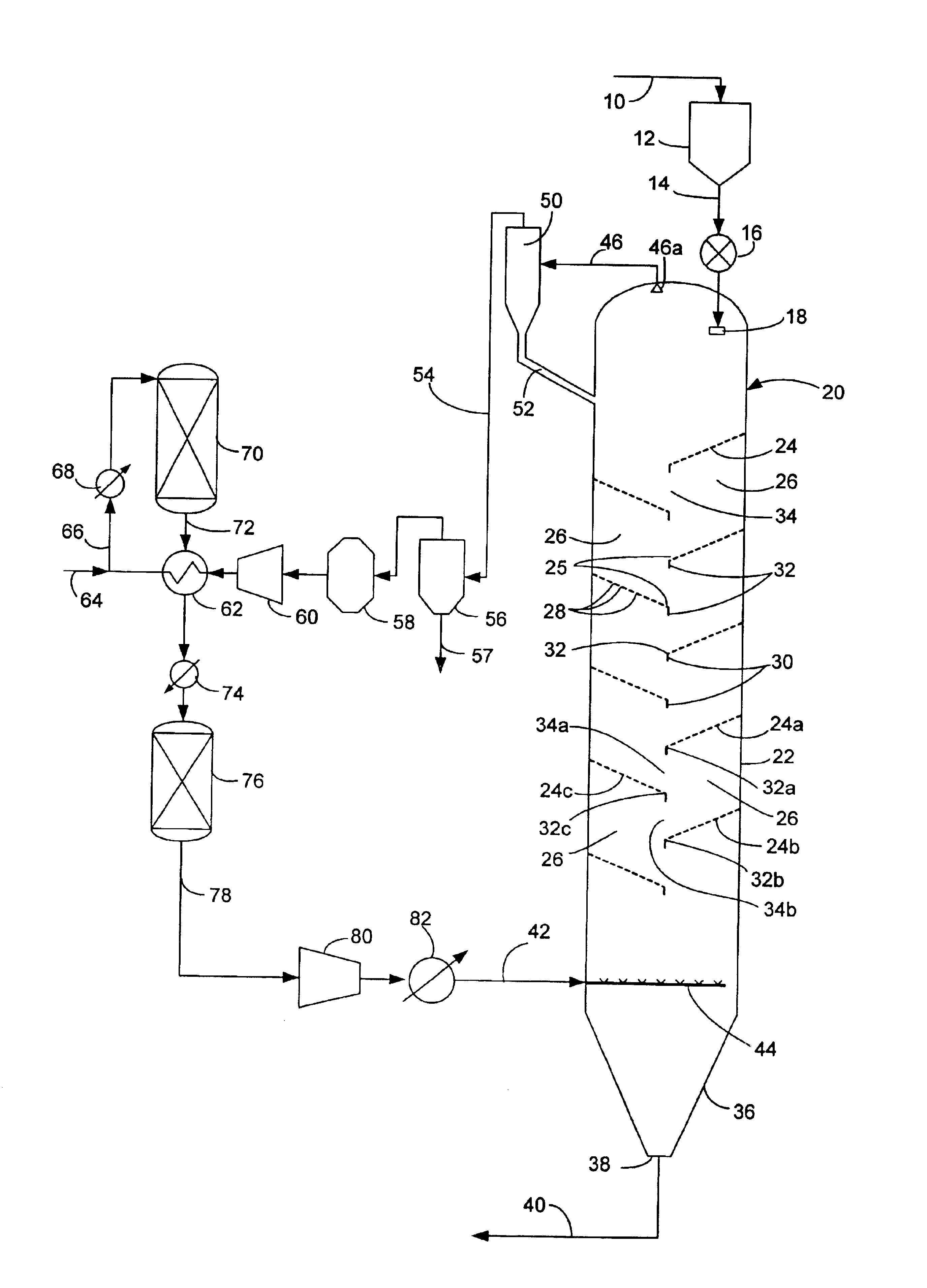Apparatus and process for continuous solid-state poly-condensation in a fluidized reactor with multiple stages
a fluidized reactor and solid-state polycondensation technology, applied in chemical apparatus and processes, chemical/physical/physico-chemical processes, manufacturing tools, etc., can solve the problems of relative low intrinsic viscosity of 0.18 to 0.25 dl/g, which is not sufficient for textile or carpet grades, and reduce the sticking tendency of fluidized beads, so as to achieve a wide distribution of intrinsic viscosity and long residence time. , the effect of wide distribution of intrinsic vis
- Summary
- Abstract
- Description
- Claims
- Application Information
AI Technical Summary
Benefits of technology
Problems solved by technology
Method used
Image
Examples
examples
[0029]We simulated an SSP reaction process using a multistage fluidized reactor of the present invention. The initial intrinsic viscosity of the polyester beads simulated was 0.30 dl / g and had an average maximum linear dimension of 100 to 200 μm. The SSP reactor was simulated with five stages and at 230° C. The SSP process simulated took 1.7 hours to produce a polyester product with an average intrinsic viscosity of 0.85 dl / g.
[0030]We also simulated an SSP reaction process using the same conditions as above but with a reaction temperature of 220° C. The SSP process simulated took about 3.5 hours to produce a polyester product with an average intrinsic viscosity of 0.85 dl / g.
[0031]We also simulated an SSP reaction process using the same conditions as above but with an initial intrinsic viscosity of 0.26 dl / g and a reaction temperature of 220° C. The SSP process simulated took 4.8 hours to produce a polyester product with an average intrinsic viscosity of about 0.78 dl / g.
PUM
| Property | Measurement | Unit |
|---|---|---|
| residence time | aaaaa | aaaaa |
| residence time | aaaaa | aaaaa |
| residence time | aaaaa | aaaaa |
Abstract
Description
Claims
Application Information
 Login to View More
Login to View More - R&D
- Intellectual Property
- Life Sciences
- Materials
- Tech Scout
- Unparalleled Data Quality
- Higher Quality Content
- 60% Fewer Hallucinations
Browse by: Latest US Patents, China's latest patents, Technical Efficacy Thesaurus, Application Domain, Technology Topic, Popular Technical Reports.
© 2025 PatSnap. All rights reserved.Legal|Privacy policy|Modern Slavery Act Transparency Statement|Sitemap|About US| Contact US: help@patsnap.com



